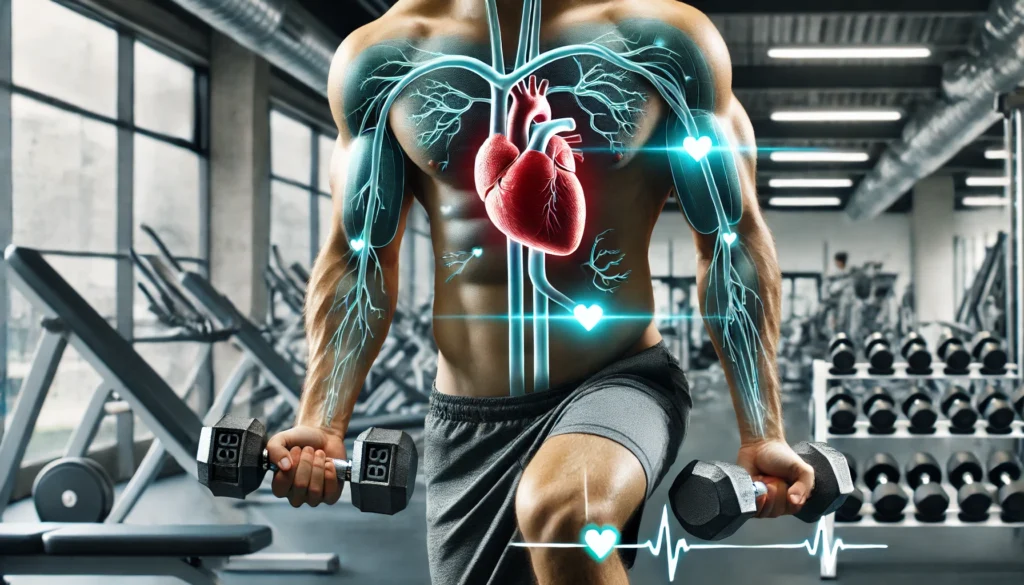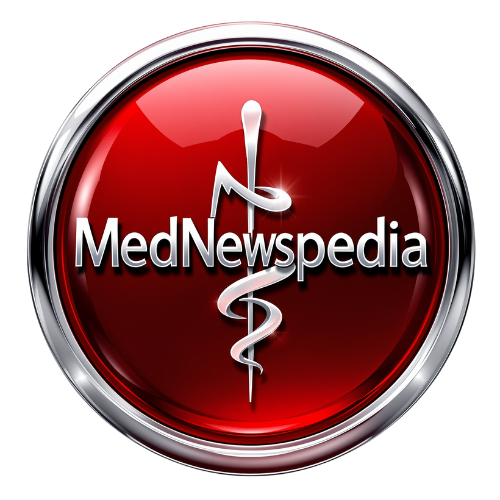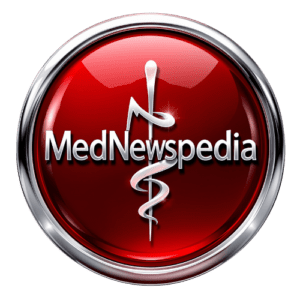Introduction
Cholesterol plays a crucial role in various physiological processes, but elevated levels, particularly of low-density lipoprotein (LDL) cholesterol, are a major risk factor for cardiovascular disease. The link between physical activity and cholesterol reduction has been extensively studied, raising the question: Does exercise lower cholesterol? Research suggests that engaging in regular physical activity can contribute significantly to improving lipid profiles, reducing cardiovascular risk, and promoting overall metabolic health. The mechanisms through which exercise impacts cholesterol levels are complex, involving enhanced lipid metabolism, increased high-density lipoprotein (HDL) production, and improved arterial function. In this article, we will examine the scientific evidence on whether exercise can lower cholesterol, explore the physiological processes involved, and discuss the best exercise strategies for optimizing cholesterol levels.
You May Also Like: Best Strategies for Maintaining Heart Health: Expert-Backed Tips for Cardiovascular Wellness
The Relationship Between Cholesterol and Cardiovascular Health
Cholesterol is a waxy, fat-like substance that circulates in the bloodstream and is essential for cell membrane integrity, hormone production, and bile acid synthesis. However, imbalances in cholesterol levels, particularly high LDL cholesterol and low HDL cholesterol, can contribute to atherosclerosis—a condition characterized by the buildup of plaque in arterial walls. This plaque accumulation narrows arteries, reduces blood flow, and increases the risk of heart attacks and strokes. Lifestyle modifications, including dietary adjustments and increased physical activity, have been shown to mitigate these risks. The question, “Does exercise lower LDL cholesterol?” is particularly relevant for individuals seeking non-pharmacological interventions to manage their lipid profiles and enhance cardiovascular health.
How Does Exercise Help Lower Cholesterol?
Regular physical activity influences cholesterol metabolism through multiple pathways. One key mechanism involves the increased breakdown and clearance of LDL cholesterol by enhancing the activity of lipoprotein lipase, an enzyme responsible for metabolizing lipoproteins. Additionally, exercise promotes the upregulation of LDL receptors in the liver, facilitating the removal of excess cholesterol from the bloodstream. Another important factor is the impact of exercise on HDL cholesterol, often referred to as “good” cholesterol. HDL plays a vital role in reverse cholesterol transport, a process in which cholesterol is transported from peripheral tissues back to the liver for excretion. Studies indicate that sustained aerobic and resistance training can lead to modest increases in HDL levels, further supporting the role of exercise in lipid management. When considering if cholesterol can be lowered by exercise, it is important to recognize that different forms of physical activity exert varying effects on lipid metabolism.
The Best Exercises to Lower Cholesterol
While all forms of physical activity contribute to cardiovascular health, certain types of exercise are particularly effective in modulating cholesterol levels. Aerobic exercise, such as walking, running, swimming, and cycling, has been extensively studied for its lipid-lowering effects. The question, “Does walking lower cholesterol?” has been addressed in multiple clinical trials, with findings suggesting that brisk walking for at least 30 minutes per day can lead to significant improvements in lipid profiles. High-intensity interval training (HIIT) has also gained attention for its ability to enhance lipid metabolism and reduce LDL levels more effectively than moderate-intensity exercise. Resistance training, though less studied in the context of cholesterol management, has demonstrated complementary benefits, particularly in increasing HDL cholesterol. The effectiveness of cholesterol-reducing exercises depends on factors such as exercise intensity, duration, and individual metabolic responses.

The Role of Exercise Intensity and Duration in Cholesterol Reduction
The intensity and duration of exercise play crucial roles in determining its impact on cholesterol levels. Moderate-intensity aerobic exercise has been shown to improve lipid profiles over time, but higher-intensity workouts tend to yield more pronounced effects. For instance, studies indicate that engaging in workouts to lower cholesterol at a vigorous intensity, such as running or cycling at high speeds, leads to greater reductions in LDL cholesterol and triglycerides. Additionally, longer-duration exercise sessions tend to produce more significant lipid-lowering effects.
Exercise vs. Medication: Which is More Effective?
For individuals with significantly elevated cholesterol levels, statins and other lipid-lowering medications are often prescribed to reduce cardiovascular risk. However, the role of exercise as a complementary strategy cannot be overlooked. The question, “Can exercise lower cholesterol as effectively as medication?” depends on the severity of dyslipidemia and the individual’s overall health status. While exercise alone may not achieve the same degree of LDL reduction as statins, it offers additional benefits, such as improved insulin sensitivity, reduced inflammation, and enhanced vascular function. Combining pharmacological treatment with lifestyle interventions, including high cholesterol physical exercise, provides a comprehensive approach to cholesterol management and long-term heart health.
The Impact of Resistance Training on Cholesterol Levels
While aerobic exercise has traditionally been emphasized in cholesterol management, emerging research highlights the benefits of resistance training. Engaging in regular strength training sessions has been shown to increase muscle mass, which in turn enhances metabolic rate and lipid oxidation. The role of cholesterol workout routines incorporating resistance exercises is gaining recognition for their ability to improve HDL levels and reduce triglycerides. Compound movements such as squats, deadlifts, and bench presses stimulate systemic metabolic adaptations that positively influence lipid profiles. Integrating both aerobic and resistance training into a structured fitness program can yield optimal results for individuals aiming to reduce cholesterol through physical activity.
The Influence of Diet and Exercise on Cholesterol Reduction
While exercise plays a pivotal role in lipid management, dietary habits significantly influence cholesterol levels as well. Combining a heart-healthy diet with exercise and cholesterol management strategies enhances overall efficacy in reducing cardiovascular risk. Diets rich in fiber, healthy fats, and plant-based nutrients have been shown to support the lipid-lowering effects of exercise. The Mediterranean diet, for example, emphasizes monounsaturated fats from olive oil and omega-3 fatty acids from fish, both of which complement the benefits of exercise and lowering cholesterol levels. Avoiding processed foods high in trans fats and refined sugars further enhances the positive impact of physical activity on cholesterol metabolism.
The Role of Lifestyle Modifications in Long-Term Cholesterol Control
Sustaining cholesterol reduction over time requires a multifaceted approach that extends beyond exercise alone. Incorporating stress management techniques, ensuring adequate sleep, and avoiding smoking are additional lifestyle factors that influence lipid metabolism. The effectiveness of working out to reduce cholesterol is maximized when paired with holistic health practices that support cardiovascular function. Mindfulness meditation, yoga, and other relaxation techniques have been shown to reduce cortisol levels, which can indirectly benefit cholesterol regulation. Long-term adherence to an active lifestyle combined with behavioral modifications is key to maintaining optimal cholesterol levels.

Frequently Asked Questions About Exercise and Cholesterol
1. How long does it take for exercise to lower cholesterol levels?
The timeframe for seeing measurable changes in cholesterol levels through exercise varies based on individual factors, including diet, genetics, and consistency in physical activity. Most research suggests that noticeable improvements in cholesterol levels can occur within 8 to 12 weeks of regular aerobic and resistance training. However, the impact of exercise in lowering cholesterol is often more significant when combined with dietary modifications and other lifestyle changes. High-intensity workouts may yield faster results, particularly in reducing LDL cholesterol and triglycerides. Long-term commitment to physical activity is key, as cholesterol-lowering benefits accumulate over time and provide sustained cardiovascular protection.
2. Can exercise lower cholesterol without dietary changes?
While exercise alone can positively influence lipid metabolism, dietary factors play an equally crucial role in cholesterol management. Engaging in exercise to lower cholesterol without making dietary improvements may still help lower LDL levels and increase HDL cholesterol, but the results are often more pronounced when paired with a heart-healthy diet. Foods rich in soluble fiber, healthy fats, and plant sterols enhance the lipid-lowering effects of physical activity. Studies indicate that combining exercise with a Mediterranean or plant-based diet yields superior outcomes compared to either intervention alone. Therefore, while the question of whether cholesterol can be lowered by exercise alone is valid, the best results come from a combined approach.
3. Does walking lower cholesterol as effectively as more intense workouts?
Walking is a highly effective form of cardiovascular exercise, particularly for individuals who are new to fitness or have mobility limitations. Studies on walking in lowering cholesterol indicate that brisk walking for at least 30 minutes a day can significantly reduce LDL cholesterol and improve overall lipid profiles. However, higher-intensity activities like running, cycling, and interval training tend to produce faster and more significant reductions in LDL and triglycerides. Walking remains an excellent option for cholesterol management, particularly when performed consistently and at a moderate to brisk pace. To maximize benefits, incorporating hill walking or increasing duration over time can enhance lipid-lowering effects.
4. What is the best exercise to lower cholesterol quickly?
The best exercise to lower cholesterol quickly is often a combination of aerobic and resistance training. High-intensity interval training (HIIT) has been shown to significantly reduce LDL levels and increase HDL cholesterol in a shorter period compared to moderate-intensity workouts. Resistance training, particularly compound movements like squats, deadlifts, and bench presses, also enhances lipid metabolism. Engaging in cholesterol-reducing exercises at least five days a week, with a mix of endurance and strength training, can lead to faster and more sustainable cholesterol reduction. Consistency, rather than intensity alone, is key to achieving optimal results.
5. Does running lower cholesterol better than strength training?
Running and strength training both offer cholesterol-lowering benefits, but they work through different physiological mechanisms. Does running lower cholesterol more effectively? Research suggests that endurance-based exercises like running and cycling lead to greater reductions in LDL cholesterol and triglycerides. However, resistance training contributes to increased HDL cholesterol and improved metabolic rate, indirectly benefiting lipid levels. A combined approach—where aerobic and strength exercises are integrated into a weekly routine—tends to produce the best overall results for cardiovascular health and cholesterol management.
6. Does cardio lower cholesterol, or is resistance training just as effective?
Cardio exercises such as cycling, swimming, and rowing are well-known for their cardiovascular benefits, but resistance training plays an equally important role. Does cardio lower cholesterol more effectively than weightlifting? Studies indicate that cardio generally leads to greater reductions in LDL cholesterol and triglycerides. However, strength training enhances muscle mass, improves insulin sensitivity, and contributes to HDL cholesterol increases. Ideally, a balanced routine incorporating both cardio and resistance training maximizes lipid-lowering effects and overall cardiovascular health.
7. Can cholesterol be reduced by exercise in people with genetic high cholesterol?
Individuals with genetic conditions like familial hypercholesterolemia often require medication to manage cholesterol levels, but can cholesterol be reduced by exercise in such cases? While lifestyle interventions alone may not be sufficient to bring cholesterol levels into the normal range, regular physical activity significantly improves lipid profiles and reduces cardiovascular risk. Exercise enhances HDL cholesterol production, promotes arterial flexibility, and mitigates other risk factors such as high blood pressure and inflammation. Even in cases of genetic predisposition, engaging in high cholesterol physical exercise contributes to improved heart health and supports medical treatments.
8. Does exercise lower LDL cholesterol significantly, or does it only raise HDL?
The impact of exercise on LDL cholesterol depends on the type and intensity of physical activity. Does exercise lower LDL as effectively as it raises HDL? While HDL cholesterol often sees moderate increases with regular exercise, LDL levels can also decrease, particularly with high-intensity training and endurance workouts. The extent of LDL reduction varies based on factors like diet, genetics, and baseline cholesterol levels. Some studies suggest that aerobic exercise leads to an average 5-10% reduction in LDL cholesterol, while resistance training further enhances lipid metabolism. Combining both forms of exercise produces the most comprehensive benefits for cholesterol management.
9. What are the metabolic benefits of exercise beyond cholesterol reduction?
In addition to lowering cholesterol, regular exercise enhances metabolic function in numerous ways. Engaging in exercise improves insulin sensitivity, reducing the risk of type 2 diabetes. Exercise also regulates blood pressure, decreases systemic inflammation, and promotes better endothelial function, all of which contribute to heart health. The effects of exercise and lowering cholesterol extend beyond lipid levels to include reduced visceral fat, improved mitochondrial function, and enhanced overall energy metabolism. These systemic benefits make exercise one of the most effective tools for long-term cardiovascular and metabolic health.
10. Does physical activity lower cholesterol in older adults as effectively as in younger individuals?
Age-related metabolic changes can influence how physical activity lowers cholesterol across different age groups. While younger individuals may see faster improvements in lipid profiles due to higher metabolic rates, older adults still benefit significantly from regular exercise. Studies show that endurance and resistance training improve cholesterol levels even in individuals over 60. Engaging in exercise to lower cholesterol in later years also helps maintain arterial flexibility, reduces inflammation, and prevents age-related cardiovascular decline. Regardless of age, maintaining an active lifestyle remains one of the most effective strategies for heart health and longevity.

Conclusion: Can Exercise Lower Cholesterol for Long-Term Heart Health?
The evidence supporting the role of exercise in cholesterol management is extensive, with numerous studies confirming its beneficial effects on lipid metabolism and cardiovascular health. The question, “Does exercise lower cholesterol?” can be answered affirmatively, provided that individuals engage in consistent, appropriately structured physical activity. The combination of aerobic exercise, resistance training, and high-intensity workouts contributes to improvements in LDL, HDL, and overall lipid profiles. While exercise alone may not completely replace pharmacological interventions for individuals with severe hyperlipidemia, it remains a cornerstone of preventive cardiology. Future research continues to explore the molecular mechanisms linking exercise and cholesterol regulation, paving the way for more personalized approaches to cardiovascular wellness. By integrating structured physical activity with dietary and lifestyle modifications, individuals can significantly enhance their cholesterol management and long-term heart health.
improving heart health with exercise, physical activity for heart wellness, natural ways to support cholesterol levels, fitness and cardiovascular health, aerobic workouts for heart function, best exercises for heart disease prevention, endurance training for lipid balance, strength training for metabolic health, heart-healthy lifestyle changes, exercise and lipid metabolism, reducing cholesterol naturally through movement, benefits of regular exercise for heart health, interval training for heart benefits, how fitness affects cholesterol levels, optimal workout routines for cardiovascular health, metabolic effects of physical activity, longevity and exercise habits, maintaining arterial health with fitness, holistic approaches to heart wellness, cardiovascular benefits of staying active
Further Reading:
Effects of exercise on HDL functionality


